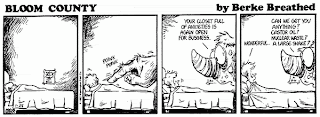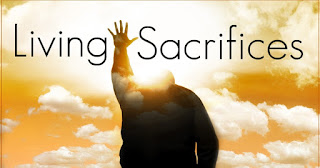The Edge
 |
| The view from Mt. Precipice...from the edge! The Jezreel Valley |
So we ate lunch at the end of the world...but I'm getting ahead of myself...
Another beautiful and hot day in Israel, and we were up early so as to enjoy as much of it as possible. Actually, we were up early because our guide, Mike, said to be up early! After a good breakfast of fresh fruit, cheeses, breads and (for those who dare) fish, we loaded up and headed to Sepphoris. When we arrived, they were setting up for a bar mitzvah so we had to hurry a bit through the synagogue. The synagogue in Sepphoris is unique because it has "graven images" in the mosaic tile, which were forbidden in Jewish faith. So this was a locale that had been infiltrated by Greek and Roman mythology. We also toured the Roman theater, a Crusader citadel at the top of the hill and then we walked through some of the "wealthy" houses with beautiful mosaic floors, including one that has been called the "Mona Lisa of the Galilee." As we headed back to the bus, we walked along two Roman streets that have been unearthed—2,000 year-old stones still with the grooves for the carts and the sewer system along the side. Sepphoris is important because of its proximity to Nazareth, and the strong tradition and likelihood that Joseph the tekton (craftsman) would have come here for work while living in Nazareth. It's entirely likely he brought his young son Jesus on many occasions to work with him, maybe to apprentice with him (Jesus as described as a tekton also). Young Jesus would have walked these streets, maybe even have admired wealthy dwellings that were far above his family's income level.
From there, we went to Megiddo, or as it's known in the Bible, Armageddon (Hebrew for "the hill of Megiddo"). Megiddo is a huge tel (or mound), comprised of 25 different cities, built one on top of the other. We were able to see pagan worship centers and stables and palaces used by King Ahab. Megiddo has been the site of many, many epic and decisive battles throughout Israel's and the world's history, which accounts for the city being built and destroyed so many times. So when John is receiving the Revelation, what better symbol to use for the end of the world, the final battle, than this place of warfare, the place where destinies had been decided for centuries? You'll notice, though, from a careful reading of the text in Revelation 16, that the armies only are said to gather at Megiddo. There is not a battle described there, as we often assume there is. Still, this place has come to represent finality, decisiveness—and, as for how such a final battle will end, rest assured that Jesus wins.
After climbing down into and through a hand-dug water tunnel (183 steps down, 80 steps up), we had lunch at the end of the world. And it was good.
The afternoon found us in Nazareth ("a shoot from the branch of Jesse"), Jesus' hometown. We sort of did the story backwards, as we started at the Mount of Precipice, the place where Jesus' hometown villagers threatened to throw him off the cliff when they didn't like his sermon (Luke 4). What astounded me was how close it is to the Mount of Transfiguration; you can see one clearly from the other. The place of what might be considered Jesus' biggest defeat is well within walking distance of the place where his glory shone through. The story comes alive when you see the land, the geography and the culture. I stood on the edge, just to see what it was like. What was really happening is the people were trying to stone Jesus. The method for doing that involved throwing the person off a cliff and if the fall didn't kill them, throwing large stones down on them. There is a ledge just a bit down from the cliff where, had they succeeded, Jesus would have landed and the people would have thrown stones on him. But Jesus walked away from the edge and on into ministry.
Our final stop of the day was at Nazareth Village, a recreation of what first-century life would have been like in Jesus' day. It's not far from where he would have lived, and it's built on the remnants of a family farm that has been discovered. We saw a sheep pen, a tomb, a watchtower and grape press (which they did with their feet...think I Love Lucy). We also watched an ancient craftsman demonstration along with a weaver, and walked through an olive press and a first-century synagogue. Though it's a recreation, Nazareth Village is one place you can sort of glimpse life as Jesus knew it, as well as the parts of such life that he drew many of his parables from.
From the end of the world to the edge of the cliff...it's been a good day. Tomorrow, we move south to Jerusalem and remain in that area until our Israel sojourn is over.
Pictures will follow as internet allows!


Comments
Post a Comment